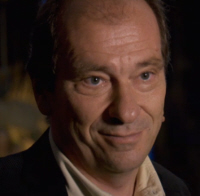MAGIC Telescope
Splitting the Atom, was the easy bit!
Horizon - small Universe
MAGIC Telescope
On top of an extinct volcano in the Canary Islands a strange telescope called MAGIC (Major Atmospheric Gamma-ray Imaging Cherenkov) stands guard.
It's on a 10-second stand-by to respond to the most violent explosions in the cosmos. With its laser-aligned panels, it is detecting the fallout
from cosmic rays that have travelled halfway across the universe. And it's helping physicists answer an eternal question.
Dr Robert Wagner of the Max Planck Institute for Physics "Well, at the end of the day, the question comes up, why do we exist, and not only we as
mankind, but why does this planet exist, the solar system, the universe?"
And if you want to know why the universe exists, you need to look, not to the very big, but to the very small.
Dr Robert Wagner "It turns out there needs to be a very small number of parameters very finely adjusted for the universe to be as it is and
for us to sit in this universe, to be able to observe it. So I think this tells why it's important to understand how the laws of nature work."
And the strangest thing about MAGIC, is that it's not really a telescope at all. It's the eyepiece of the biggest microscope in the world.
It's just one of the incredible tools scientists have developed in the ongoing search for the smallest thing in the universe.
Dr Robert Wagner
The exploration of the most distant, unreachable territory in our universe is challenging the minds of our greatest scientists. As you look
smaller and smaller, no one knows if there will ever be an end. The hunt for the smallest thing in the universe is challenging our understanding
of the very nature of space and time.
Aachen Cathedral
The search for the smallest building blocks of the universe is one of the oldest in science. For almost 1,000 years, this mediaeval
cathedral has looked over the streets of Aachen in Germany, an enduring monument of stone and glass. But if
you look really, really closely, all is not what it seems.
Professor Joachim Mayer of the Ernst Ruska Centre is a man with a unique view on the world. He sees the bizarre changes that come about
when you view the world in terms of the building blocks of stuff – atoms.
When you or I might see red, he sees gold.

Joachim Mayer
Professor Joachim Mayer "There are always two parts of your brain. If you look, if you come in as a human being but as a scientist as well, you
are stunned by what people have built in these mediaeval times. And then you ask yourself what kind of materials did they use? If you look for example
at these glass windows, it's a very well known that actually nanotechnology is used in some of the colours, for example gold
nanoparticles actually, produce the most durable red colour which can be produced. And it's still a miracle to us how in these ancient times, you
know, the people found out that this is the most efficient way to produce a red colour."
Stained Glass Window
The red is just an illusion caused by the massive difference in scale between the tiny clumps of gold atoms and us – the giants who see red. It's
one of the reasons scientists are obsessed with reaching the smallest scales. Things don't just get smaller, they change.
Joachim Mayer "Scientists have thought for a long time what are the smallest building blocks of our matter, and you can see the beautiful matter around us."
But just how small are these building blocks? If we start on the familiar scale of a human and zoom in ten times closer, we get to the size of a face.
Magnify by ten once more, and we are looking at the iris of an eye. 100 times closer and we can see a human hair, magnified 10,000 times. Microscopes have
unveiled a world smaller than the wavelength of light. But the ability to see individual atoms has, until recently, been a dream.
